Bicone
A bicone or dicone (bi- comes from Latin, di- from Greek) is the three-dimensional surface of revolution of a rhombus around one of its axes of symmetry. Equivalently, a bicone is the surface created by joining two congruent right circular cones base-to-base.
A bicone has circular symmetry and orthogonal bilateral symmetry.
Geometry
For a circular bicone with radius R and height center-to-top H, the formula for volume becomes
For a right circular cone, the surface area is
- where is the slant height.
Related polyhedra
A bicone can be seen as a polyhedral limiting case of an n-gonal bipyramid where n approaches infinity. It can also be seen as a dual of a cylinder as an infinite-side prism.[1]
| Polyhedron |  |
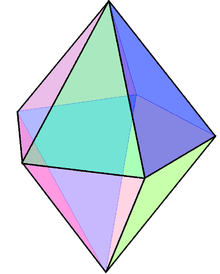 |
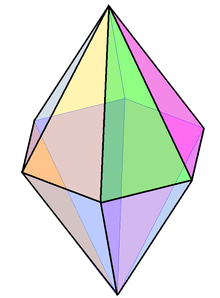 |
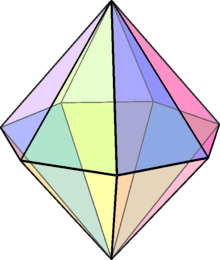 |
 |
 | |||
|---|---|---|---|---|---|---|---|---|---|
| Coxeter | |||||||||
| Tiling |  |
 |
 |
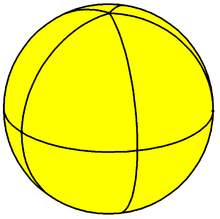 |
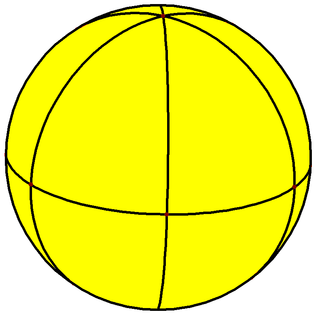 |
 |
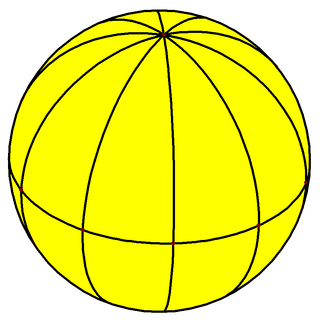 | ||
| Config. | V2.4.4 | V3.4.4 | V4.4.4 | V5.4.4 | V6.4.4 | V7.4.4 | V8.4.4 | V9.4.4 | V10.4.4 |
See also
References
External links
This article is issued from
Wikipedia.
The text is licensed under Creative Commons - Attribution - Sharealike.
Additional terms may apply for the media files.